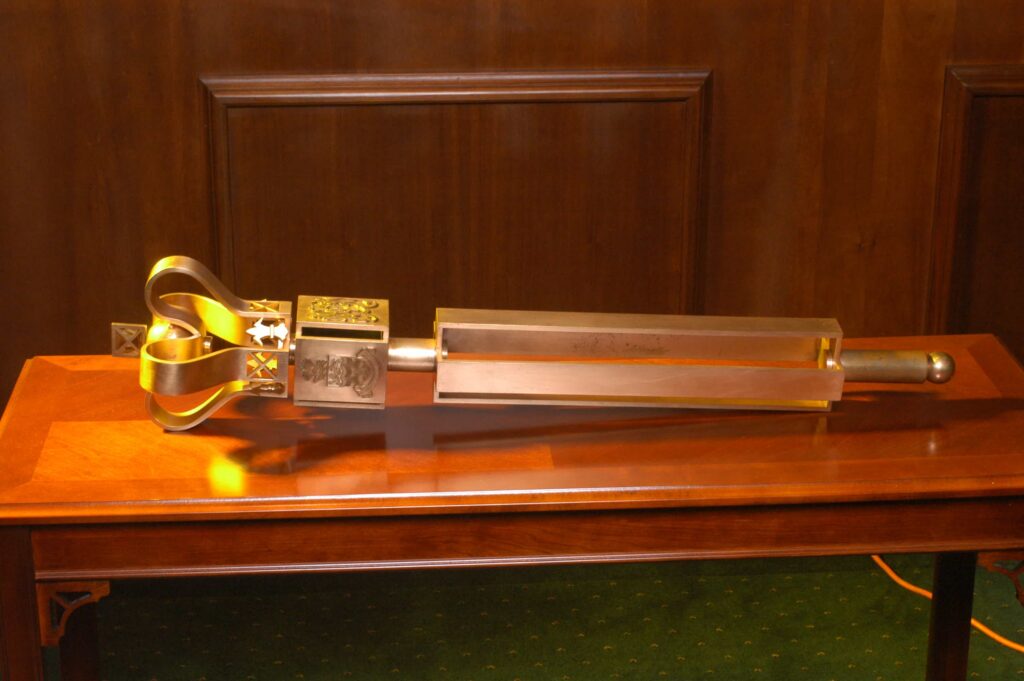Commission
Subscribe
Legal
Made with  by eyecay
by eyecay
 by eyecay
by eyecay © 2023 Parliament Management Commission. All rights reserved

In parliamentary legislatures, the Mace is a symbolic ornament carried by a Mace-bearer, termed the Serjeant-at-Arms, before a sovereign or other high official in legislative ceremonies like a formal Meeting of the House. Originally a weapon in medieval Europe, its design was adapted to protect the sovereign or their representative.
According to Caribbean Circuit by Sir Harry Luke, (1950), the earliest recorded Mace for a Caribbean Commonwealth country was that of the Jamaican House of Assembly, for which “His Majesty Charles II was pleased to favour the island with a Mace that cost near £80 which is carried before the Governor on the solemn occasions as a mark of his authority.”
When the Presiding Officer (Governor or Speaker) is in the Chamber, the Mace is placed in its support beams on the Clerk’s desk as a symbol of the Speaker’s authority to oversee the Legislature and is carried into the meetings of Parliament by the Sergeant-at-Arms. If the Mace is not present in the Chamber, meetings of the House with the Speaker cannot proceed. When the Sergeant-at-Arms removes the Mace from the table, the House has either adjourned or is recessed.
The Serjeant-at-Arms will rest the Mace in the upper brackets of the Clerk’s dais while the Speaker is in the Chair (the orb and cross surmounting it pointing towards the Government of the day). The Serjeant will rest the Mace on the lower brackets when the House is in Committee and the Speaker takes the chair at the Clerk’s dais.
The Mace was presented to the Legislative Assembly on Wednesday 20 November 1974 by the Bank of Nova Scotia and the Bank of Nova Scotia Trust Company (Cayman) Limited at a cost of approximately $1,960. The top of the Mace features an orb and a Maltese cross inlaid with turtle shell. Other symbols at the top are the Royal Arms, the Cayman Islands Crest, and the inscription ‘EIIR’, symbolizing Regina (Queen) Elizabeth II. In 2003 the Mace underwent restoration work that was carried out locally by Tropical Metals. The work entailed dissembling the multi-faceted item, cleaning each piece, applying a metal-treatment finish, and final reassembly.
Coinciding with the restoration of the Mace, its holding case underwent a similar overhaul at the hands of Mr. Ransdale Rankine, an inmate at HM Prison Northward. The mahogany case is lined in blue velvet. Mr. Rankine, who is a carpenter by trade, was assisted by fellow inmate Tex Foster. The work entailed sanding and stripping the wood, repairing cracked areas, and applying a final coat of gloss varnish.
For more information on the Mace and its history, see our book commemorating the 50th Anniversary of the Parliament building here.
Commission
Subscribe
 by eyecay
by eyecay © 2023 Parliament Management Commission. All rights reserved